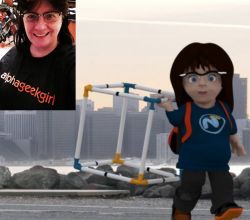Organic, low-poly built-in mesh presets
| Description | Ever needed a low-poly bird for a background, or wanted to sculpt an organic shape like an animal or human but didn't want to start totally from scratch? Did you know modo has them built-in? They're part of the Solid Sketch menu. The Solid Sketch tool provides a quick method for “roughing” out organic shapes. By clicking down, new nodes are created and Solid Sketch connects these dots with a smooth flowing mesh. Each node can spawn new branches to create complex shapes quickly and easily. When you click to create a node you can immediately drag to the right and left to scale the node. Once you have released the mouse button you can use the various handles to move, scale, rotate and twist the node. Additionally, holding the Shift key and dragging on the center handle will scale on all three axes. Clicking on a node with the middle-mouse button will delete that node. Note: It seems for some reason that this functionality has been removed from MODO701. |
||
|---|---|---|---|
| How? |
 Go to > Geometry > Curve Palette > Presets |
||








 67%
67%
















